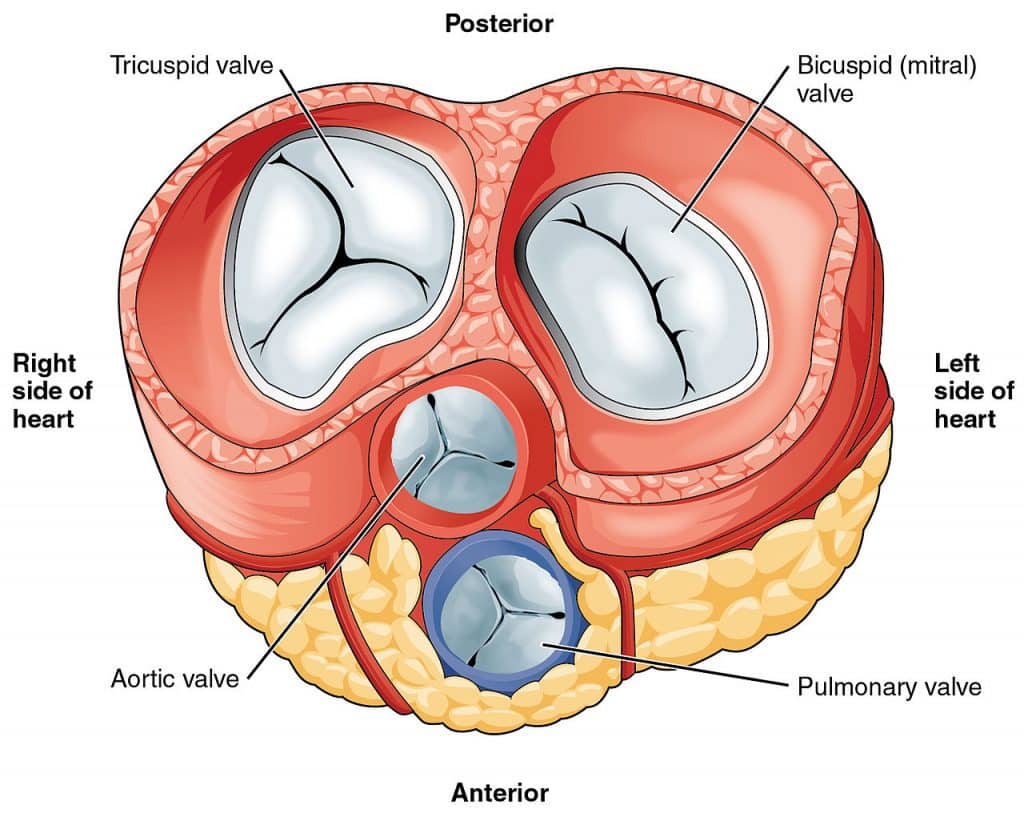The Heart and its Valves

Your heart is a pump that works non-stop to supply both nutrients and oxygen to all the living cells of the body. The normal heart has four chambers and four valves forming two pumps side by side. The upper chambers are called the atria and the lower chambers are called the ventricles. The ventricles are the actual pumping chambers. Blood flow from the atrium to the ventricle and out of the ventricle is controlled by the heart valves, which are one-way valves. That is, they allow blood to flow only in one direction.
Blood returning to the heart from different parts of the body after delivering oxygen and picking up carbon-dioxide is received in the right atrium and delivered to the right ventricle through the TRICUSPID valve. It is pumped into the lungs through the PULMONARY valve. After removal of carbon-dioxide and picking up oxygen in the lungs, the oxygenated blood is received in the left atrium from where it flows into the left ventricle through the MITRAL valve. It is pumped out to the entire body through the AORTIC valve.








